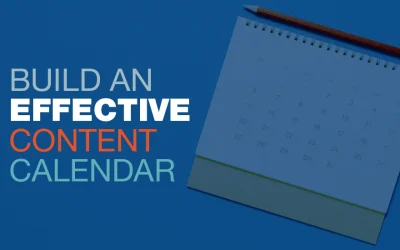Understanding your target audience is paramount in marketing. However, they aren’t the only group you need to research and understand.
You also need to understand your competitors. More specifically, you need to know what’s working for them and how they are attracting your potential customers. That is where a competitive analysis comes in.
Analyzing competitors helps B2B tech companies get a full view of the competitive landscape and gain more market share. By understanding your rivals’ strengths, weaknesses, and strategies, you can gain a competitive advantage and make more informed decisions.
Analyzing competitors helps you gain valuable insights into their products, marketing strategies, online presence, pricing strategies, and more. Armed with this knowledge, you can:
- Better position your own business
- Identify gaps and potential opportunities in the market
- Develop strategies to outperform your rivals
So, let’s dive in and uncover the secrets to successfully and effectively conduct a competitor analysis.
Importance of Analyzing Competitors
Understanding your competition matters. Why? Because they’re potentially taking business that could and should be yours. If you don’t know what competitors are doing, you are missing out on major growth opportunities.
Simply put, analyzing competitors provides you with the information you need to stay ahead.
Analyzing your competitors helps identify gaps in the market. For instance, imagine your company sells POS solutions to retailers. Maybe there is a software function that customers would love but that none of your competitors offer. The only way to know that is to be aware of what your competitors are selling in the first place.
In addition to finding gaps, you can also get a sense of how well you are doing by benchmarking against your industry rivals. Seeing areas where you excel and where you need to improve arms you with information. You can use this info to:
- Create better services and customer experiences.
- Hone existing solutions and services and how those are delivered.
- Attract new clients who may be dissatisfied with competitors.
Being dialed into your market and industry will help you see changes and trends faster. Discovering new trends can help you capitalize on new buying preferences before competitors do. Likewise, having your pulse on these shifts can help you adapt and make decisions to secure your position in the market continually.
Before you can analyze your competitors, you need to identify who they are.
Identifying Your Direct and Indirect Competitors in B2B Tech
This might be common knowledge, but there are two kinds of competition: direct competition and indirect competition.
Direct competitors are companies that offer the same or very similar products or services to the same customer groups. You likely already know your direct competitors.
Indirect competitors are companies that offer different products and services, but they are competing for the same customer segments. When analyzing competitors, direct competitors may have more impact on your business than indirect ones. Still, you should analyze both groups.
There’s a good chance someone at your company has already created a list of competitors. Start there and double-check the accuracy of the list. If any obvious companies are missing, update the list accordingly.
Next, you can brainstorm with the leadership team and sales team to uncover lesser-known competitors. Seasoned team members will likely know other competitors you might have overlooked. Add any of these companies to your list as well.
If your company can pay for SEO software, you can use their competitor research tools to identify search competitors. Not all of these will be direct competitors, but some likely will.
You can also leverage social media to find companies similar to yours. Search important keywords on LinkedIn, or look up your own company and check out the “people also viewed” section on the right.
If your company is large or in a defined niche, using NAICS and SIC codes is still a useful way to find competitors. These aren’t as strong as some of the other approaches, but they can help ensure your list is as complete as possible.
Now that you have a list, it’s time to start researching them to gain insights.
How to Research Tech Competitors
The best way to research your competitors is by visiting their websites and taking notes. Pay attention to their homepage messaging and make note of the tone and style. Is there anything unique about the brand voice? There should be, but if not, take note of that.
Check out their service or solutions pages. Do they focus on features and benefits or does their messaging take a different angle? Often pricing will not be available for enterprise tech solutions. However, you can get an idea of whether they offer a complete solution or whether buyers must choose from dozens of modules to create what they need. Figure out their unique selling proposition and summarize it for each service or product.
If any of your competitors are public companies, you can look at their public financials and other documents. However, most companies will be privately owned and this data won’t be available to you.
Another great place to gain insights is from public reviews about your competitors. Check out what reviews they feature on their website, as well as what people are saying on Google and other review websites. Public reviews reveal the good, bad, and ugly and help paint a more vivid picture of each competitor.
Assessing Marketing Strategies of B2B Tech Competitors
There are some simple ways to analyze what your competitors are doing. You may already do some of these. When done in conjunction with each other, you can gain insights into how your competitors operate.
One of the most obvious ways is to regularly read their content. You can sign up for their newsletters or use RSS feeds to read new blogs and other website content. Dissect what you read and see. Pick it apart and try to figure out what parts of their messaging and visuals are working or resonating with the market.
Likewise, keep a pulse on their social media accounts. Keep track of the type of content they post, how often they are posting, engagement rates, and follower changes. There are various tools out there to help make this part less labor-intensive.
If possible, pay attention to their ads as well. This will help you see what areas are most important to them because they are paying for exposure. Break their ads down by evaluating the tone and style of the graphics and messaging.
You won’t be able to see all the results of their ads. Over time, you can get a sense of what is working for them because they’ll repeat the good elements more often.
Lastly, you can do an SEO audit. This is made easier with SEO tools, like Semrush or Ahrefs, which allow you to see what keywords the company is ranking for. It can also help you find ways to outrank them in Google search.
SEO audits are too large of a topic to cover in depth in this post. Just know that an SEO audit can reveal a lot about your competition.
Evaluating Competitors’ Pricing Strategies
Depending on your industry, competitors may have a whole web page dedicated to pricing, or nothing publicly available at all. You may have industry connections who can tell you about competitors’ pricing. Are they charging a lot more or less than you’d expect for their services or products? Are they charging for services you may offer free, such as support? Try to figure out potential reasons for their pricing strategy.
When selling your solutions and services, focus on the value they bring and the pain points they solve instead of the cost. If you are in a competitive situation, and you know you have lower or higher pricing, it could be something you need to address.
Understanding what prices competitors charge and why can help you make an apples-to-apples comparison. Again, make sure you are stressing the value you provide over the competitors. Be ready to talk about pricing differences if they come up.
Conduct a SWOT Analysis
With all of the information you have gathered, you can create a SWOT analysis. This is a subjective matrix that helps group a company’s Strengths, Weaknesses, Opportunities, and Threats. Here is a simple SWOT analysis template you can use to get started.
Begin filling out your SWOT quadrants with relevant info from your research.
You should make a separate SWOT for each main competitor, as well as one for your own company. The more detailed the SWOT analysis is, the more useful it will be, so take your time and don’t rush through the process. Involve your team and the sales team as well in this exercise. Completing these together will give everyone a much better picture of how you match up to competitors.
Conclusion
Now that you know how to analyze your competitors, the next step is what to do with the info. This part is pretty simple. Review your SWOT analysis. Lean into your strengths while mitigating risk from your weaknesses.
Find ways to take advantage of market opportunities, and expose competitors’ weaknesses in your marketing.
A word of caution, it’s wise not to mention competitors by name in any marketing or advertising. This can open a can of worms. However, you can point out things about your industry as a whole and address how your company is different or better.






0 Comments